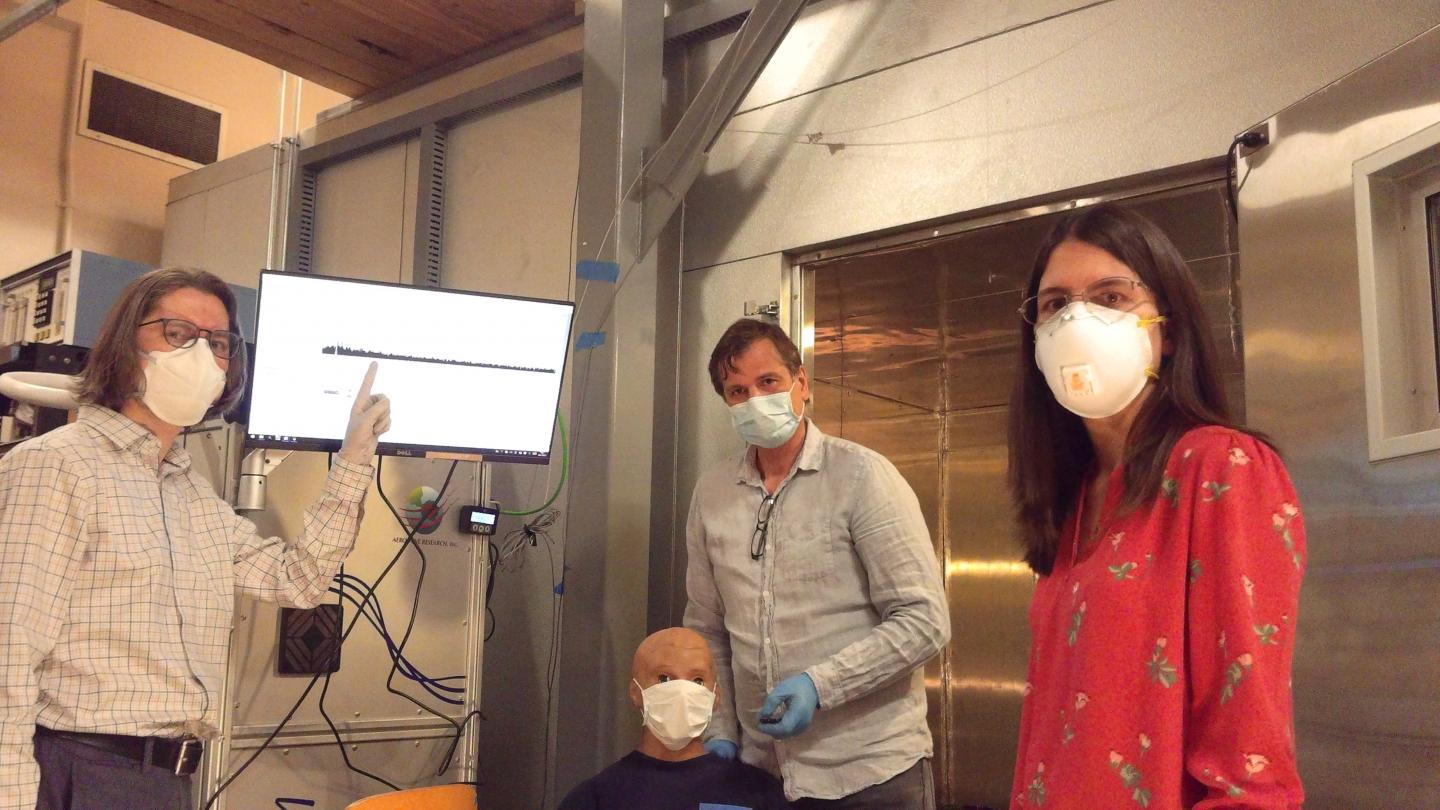
Credit: University of Texas at Austin
The spread of coronavirus has spurred massive efforts to consistently disinfect everything from office buildings to schools to city buses. New cross-discipline research from the Cockrell School of Engineering aims to help minimize exposure to chemical byproducts created during the cleaning process by finding optimal combinations of protective masks and disinfectants.
Breathing on masks makes them wetter, and the combination with cleaning chemicals alters the chemistry of the masks. These changes could create byproducts that are more harmful than the cleaning chemicals themselves, the researchers say.
“The goal is to tell people if they are going to use this type of disinfectant, they should be using that type of mask, how to use the mask and how often to change it,” said Lea Hildebrandt Ruiz, an assistant professor in the Cockrell School’s McKetta Department of Chemical Engineering, who is leading the project.
The project garnered a $190,337 grant from the National Science Foundation’s Rapid Response Research Program for urgent research meant to target an ongoing problem. Hildebrandt Ruiz is working with professor Atila Novoselac and assistant professor Pawel Misztal, both from the Department of Civil, Architectural and Environmental Engineering. Also involved are chemical engineering professor David Allen and former Cockrell School professor Richard Corsi, who is dean of Portland State University’s Maseeh College of Engineering and Computer Science.
The team will use “thermal manikins” with breathing systems that Novoselac developed. The manikins will be outfitted with four different types of masks and placed in chambers with a variety of concentrations of disinfectants meant to simulate cleaning projects. The researchers will then measure what the manikins inhale.
Misztal and Hildebrandt Ruiz’s labs use mass spectrometers that allow the team to capture chemistry changes in real time, instead of having to send out every sample for analysis. While the team won’t go as far as to look at health impacts in this study, the research should provide data for future studies.
The team expects the project to last approximately six months, with preliminary results coming as soon as a month into the process.
The project builds on a study the researchers have been working on, looking at changes in chemistry in indoor air under various cooking and cleaning conditions, including bleach cleaning. They realized data from that experiment could be relevant to the coronavirus crisis.
Trial experiments from the team’s new disinfectant study have shown that just a droplet of bleach on a mask could galvanize changes in its chemistry. Increased disinfecting of facilities could become a long-lasting effect of coronavirus, making it more important than ever to understand how chemicals and the gear that is supposed to protect crews interact.
There are common misconceptions out there, Misztal said, that basic masks will protect people not only from viruses and aerosols but also from gaseous chemicals in disinfection products.
“Most masks that protect us from COVID-19 will not work for stopping gaseous disinfectants, so good ventilation of the building and avoiding direct inhalation of disinfection vapors is essential,” Misztal said. “We want to understand what is forming on the mask from the reaction of disinfectants because we do not know how harmful byproducts can be if directly inhaled.”
###
Media Contact
Nat Levy
[email protected]
Original Source
http://www.





